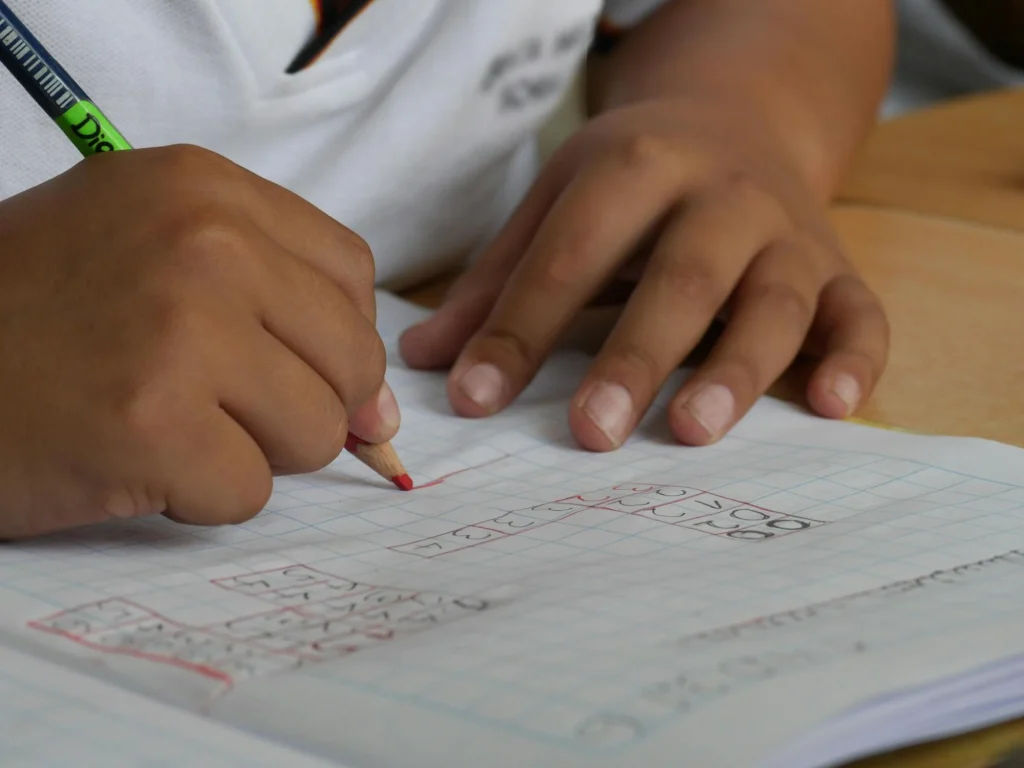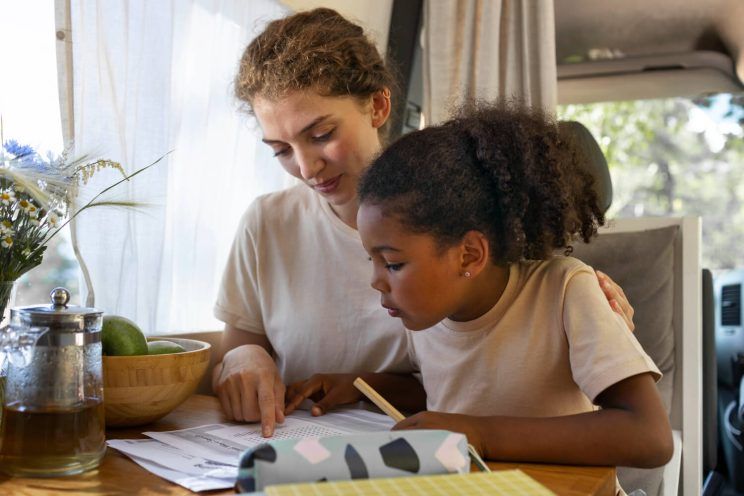How to Teach Decimals: 16 Fun and Easy Ways
reviewed by Jo-ann Caballes
Updated on August 13, 2025
Whether you’re a math teacher or a parent teaching at home, decimals can be a difficult concept to introduce. If the question ‘How do you explain decimals to a child?’ is on your mind — don’t worry. We’ll guide you through 16 fun and easy ways of explaining decimals so your little one feels confident and ready to tackle them in school and day-to-day scenarios.
How Brighterly math tutors teach kids decimals
The Brighterly Math tutoring platform teaches decimals in a way that is engaging and digestible. Here are several approaches Brighterly tutors use to help students understand decimals.
- Step-by-step breakdown: During a decimal lesson, Brighterly math tutors start by explaining decimals in parts, breaking the concepts down. They begin with the foundation, such as identifying and recognizing decimals. Next, tutors gradually move to more complex concepts and ideas, like learning operations with decimals.
- Real-life application: Tutors add practical examples from real-life situations, such as money, measurements, and time. Children naturally are more inclined to use these examples while learning decimals, as it is easier for them to grasp than theoretical explanations.
- Gamified learning: The Brighterly Math program utilizes gamified learning to teach decimals (and other math concepts as well). Games and fun activities make studying enjoyable for both children and tutors, resulting in better academic results for kids.
- Student-oriented pace: When introducing decimals, school teachers tend to rush things (having a strict learning plan) without considering their students’ learning paces. Brighterly tutors create a comfortable space where kids are encouraged to ask as many questions as they need and explore the topic in depth.
- Interactive practice: Fun ways to teach decimals involve many interactive activities, which allow students to get hands-on practice adding, subtracting, multiplying, comparing, and dividing decimals. This system of interactive practice powers up the learning process and reinforces necessary knowledge.
What is the easiest way to teach decimals?
The easiest way to teach decimals to children, regardless of their math knowledge, would be to hire a professionally trained and experienced tutor. Brighterly can provide you with a qualified tutor within a day, so the issue of ‘How to explain decimals to a child?’ is no longer a concern.
How to practice decimals with Brighterly
Understanding decimals requires much practice, and Brighterly offers your child several ways to do that. First, Brighterly equips your kid with a comprehensive decimal explanation. Grasping decimals allows children to widen their understanding of fractions, percentages, and measurement concepts, resulting in a better foundation for future math learning.
Next, the Brighterly Math program gives your child a chance to take several diagnostic tests to assess their familiarity with decimals. This fast and simple placement test will help you understand whether your child needs further explanation and practice with decimals — great for closing those knowledge gaps! For educators or parents, the Decimal Place Value Practice Problems and Decimals Practice Test are great resources.
Moreover, with Brighterly, you can book a first session free of charge. You’ll be able to pick a date and time that works best for your child and experience the first class, ask all essential questions, and learn more about our educational approach.
Decimals Practice Worksheets
In addition to the first free session and assessment test, Brighterly offers free math worksheets available to you at all times. As a parent or an educator, you can select free printable worksheets on math topics to assist students in achieving their academic goals.
This is a great resource that can help you along when your child wonders how to understand decimals. All of the worksheets include a wide range of activities: multiple choice, gap-filling/matching exercises, and more. They are also full of interactive visuals that help your child grasp math concepts through examples and visuals.
When do kids learn decimals?
Depending on their school curriculum, teachers normally begin teaching decimals to 4th graders. However, they are often introduced to basic decimal concepts in 3rd grade, often through learning money. For instance, they can learn that $2.25 is two dollars and twenty-five cents. That helps them understand tenths and hundredths.
Introducing decimals in 3rd grade is usually why most parents get confused when wondering, ‘What grade are decimals taught?’, but it’s typically 4th grade exclusively.

How to teach decimals to 4th graders?
- Recognize tenths
- Recognize hundredths
- Represent decimals
- Read and write decimals
- Learn decimal place value
When children reach the 4th grade, parents begin to wonder how to teach kids decimals. If you use the right approach, teaching decimals to 4th graders can be fun and simple. Now you know a couple of strategies and ideas for your child on how to learn decimals.
How to teach decimals to grade 5
- Learn to compare decimals
- Practice rounding decimals
- Connect decimals to fractions
- Equivalent decimals
- Master decimal operations
In the 5th grade, students build on what they learned about decimal numbers in year 4. Whether you teach decimals at school or home, it is crucial to have the right strategy for explaining how decimals work.
How to teach decimals? More about basic ways
Parents always wonder how to give students a context for the learning of decimals, when and how to teach decimals, and what the best decimal definition for kids is. Understanding how to teach decimals to children is important because this concept introduces a new element: the decimal point and numbers that are expanded beyond it (unlike whole numbers).
This can feel like a completely new realm of math, and parents can also get confused. Decimals require an understanding of the number and how its position after the decimal point affects its value. If you’re a confused parent, too, this ten-step guide will help you learn decimals in grades 4 and 5.
Recognize tenths
First, decimal numbers are numbers with a whole part and a fractional part separated by a dot at the decimal point. The number on the left is the whole part of the decimal point, while the digits on the right are the fractional points. Let’s look at the example: in 4.8, 4 is the whole part, and 8 is the fractional part, meaning that 4.8 is more than 4 and less than 5. Decimals are a specific form of writing numbers that aren’t whole, a way to measure things precisely.
So, when discussing tenths, in the decimal 4.8, the 8 is in the tenth place, representing 8 parts out of 10. When kids do learn decimals they have to get the sense of recognizing that each digit after the decimal point has a specific place and value. As a result, kids should confidently identify and write numbers in the tenth place.
Recognize hundredths
Hundredths are the next step in decimals that your child has to get to know. They are the second number that comes after the decimal point; for instance, in 4.08, the 8 is in the hundredth place. This means 8 parts out of 100.
Move to the hundredth once your kid is comfortable with the tenths. Children in 4th grade are usually quite ready for that information.
Understanding the hundredths concept involves recognizing that places that come after the decimal point represent a part of a whole but are divided into even smaller pieces. Once children can recognize and write decimals with numbers in tenths and hundredths places, they are ready to move on to the next step.
Represent decimals
Representing decimals means showing them through visual models or on a number line. With this step, children can see how decimals work in real life.
As a practical application of their decimals understanding, this can be introduced shortly after they’ve learned about the tenths and hundredths.
At this stage, children learn to place decimals on a number line or use visual aids to understand their value. Once kids can represent a decimal using a picture (for example, 0.5 and 0.75) on a picture, object, or a number line, this life skill is acquired.
Read and write decimals
Explaining decimals involves understanding how to express decimal numbers in writing and verbally. Writing and saying them correctly is crucial for children to progress further. For example, the decimal 4.14 is read as “four point one four.”
Again, once kids are comfortable with identifying and representing tenths and hundredths, they can start to write and read decimals.
The idea here is for children to recognize each digit’s place and value in a decimal and to be able to express it correctly verbally and in written form. When a child can read and write decimals in various contexts with confidence, it means they’re ready for the move.
Learn decimal place value
Explaining decimal place value is especially important during a decimal lesson. It signifies the position of each digit in a decimal number and how this position can determine the value. Let’s look at the example — in the decimal 0.675, the 6 is in the tenths, the 7 is in the hundredths, and the 5 is in the thousandth place.
This concept is often introduced to children who have a solid foundation of decimals and have mastered all the previous skills, so either in 4th or at the beginning of 5th grade. Also, the concept of thousandths decimal is introduced.
This skill serves to understand how the value of a digit changes depending on where it stands. When students are able to break down a decimal into its individual place values and grasp the value of each digit within the decimal, they can move further.
Learn to compare decimals
Teaching decimals to 4th graders and 5th graders often involves comparing and ordering decimals. It means looking at two or more decimals and identifying the larger and the smaller ones. It does also include arranging them in ascending or descending order.
This skill set is introduced around 4th grade but it’s normally taught after children become comfortable with place value. So, explaining decimals and how to compare them is more appropriate for most children in 5th grade.
In this section, children learn to compare decimals more accurately. This is a critical skill because it allows the child to determine the order of a series of decimals and understand why one might be larger, smaller, or even equal.
Practice rounding decimals
If you don’t know how to teach rounding decimals, this part is for you. It basically means this: making them simpler to work by rounding to the nearest tenth. For example, rounding 3.257 to the nearest tenth would be 3.3.
When students have a good understanding of decimal place value, they can be introduced to rounding decimals, typically in 5th or 6th grade, depending on their school’s curriculum.
A key factor here is teaching kids how to determine which decimal place needs rounding and the correct way to do so. This knowledge will serve as a foundation for future decimal understanding.
Connect decimals to fractions
The next step in how to teach decimals is teaching how to connect and convert them to fractions. This involves changing a decimal into a fraction. For example, the decimal 0.50 can be converted to the fraction ½.
This skill requires preparation and is normally taught after children are comfortable with both fractions and decimals. Therefore, they should begin this segment when they are in the 5th or 6th grade.
Understanding the relationship between decimals and fractions and connecting and converting them is a significant milestone and is one of the blocks fundamental to math understanding.
Equivalent decimals
Equivalent decimals are the next step in the decimal journey. They are different decimals that show the same value. For instance, 0.75 and 0.750 are equivalent decimals.
Once students have learned the rounding decimals and how to convert between decimals, the equivalent decimals are introduced. Also, if you’re wondering ‘How to teach decimals to 6th graders?’, this is typically where you start.
At this stage, kids are already familiar with decimal place values, so it’s important to help them recognize that adding zeros to the end of a decimal isn’t changing the value. When students can successfully recognize decimals that are equivalent to each other, you can move to the next step.
Master decimal operations
Decimal operations are where you add, subtract, multiply, and divide decimals. Children use this segment in various math calculations.
These skills are learned when students have a solid understanding of all the concepts that were taught previously.
When children can apply all the previous knowledge about decimals to solve various mathematical problems with operations, it’s safe to say they can confidently and accurately perform subtraction, addition, multiplication, and division with decimals; hence, they’ve mastered decimal operations.
6 fun ways to teach decimals
- Decimal bingo
- Snack shop activity
- Decimal art session
- Cooking with decimals
- Decimal card game
- Decimal counting
Note: Many parents ask, ‘What grade do you learn decimals?’ and ‘How do you explain decimals in a fun way?’, thinking that learning decimals is a tedious and boring topic; in reality, if you use gamified learning, mastering decimals can become an enjoyable adventure.
Decimal bingo
Explaining decimals becomes significantly easier and more fun if you consolidate it with a little classic bingo game. This is one of the most engaging ways to teach decimals, especially for children with attention span issues.
To set everything up, create bingo cards with decimals like 0.25, 1.75, or 2.50. Next, you can call out decimal values so your student marks their card if they have matching numbers. The end game here is to get a row, column, or diagonal filled. Once they have it, they say, “Bingo!” and win the game.
Snack shop activity
In order to explain how decimals work, you can also use snacks (dietary appropriate!). You can set up a snack “shop” with items labeled with decimal prices, such as $0.50 or $1.75. Make kids “purchase” snacks with play money or coins by adding decimals and making changes.
This is also an amazing game for learning money management, especially for 3rd or 4th graders.
Decimal art session
Creativity and art are the perfect means to understand decimals. You can use it to your advantage by providing students with a 10×10 chart and asking them to share some portions to represent decimals. For example, shading 20 squares out of 100 represents the decimal 0.2.
Want to go further? Use mosaic-style art pieces and utilize different decimal values. Ask students to label each section with corresponding decimal fractions.
Cooking with decimals
Cooking together with your children is a great way to show how decimals work. Why? Most recipes have measurements like 0.5 cups of flour, 1.5 teaspoons of salt, or a full cup of sugar. Choose a simple recipe, take your little one to the kitchen, and have yourself a little decimal fun! Help your child to measure ingredients and explain decimals along the way.
Decimal card game
How to teach kids decimals? Get a deck of “cards” that are all the same size. Write a decimal number on each card using the same number of decimal places (1 or 2 decimal places). Next, ask your kid to arrange the numbers in the correct sequential order. When they finish, ask them to explain how they arranged the numbers in that order.
Decimal counting
Finally, play decimal counting — a fantastic game for understanding decimals. Ask your child to count decimals to see how far they can go without making a mistake. In order to start playing, choose a starting decimal number and decide whether you want to go up or down. Take turns and say the next number in the decimal sequence. For instance: 0.20, 0.21, 0.23, 0.24, 025.
How to teach decimals to kids? Conclusion
Decimals sound like a lot to manage — kids often struggle to grasp how decimals relate to fractions and whole numbers.
That is why deciding on the right teaching strategy and some fun and engaging decimal games is crucial for successful learning. Parents also have to stop asking questions, like ‘When do you learn decimals?’, and realize that this is an ongoing years-long process. With the abovementioned 16 easy and fun ways to teach decimals, you’ll have the tools and activities needed to make decimals more accessible.
Finally, if you want to get to know Brighterly expert math tutors, book a demo session free of charge and enjoy stress-free math!















